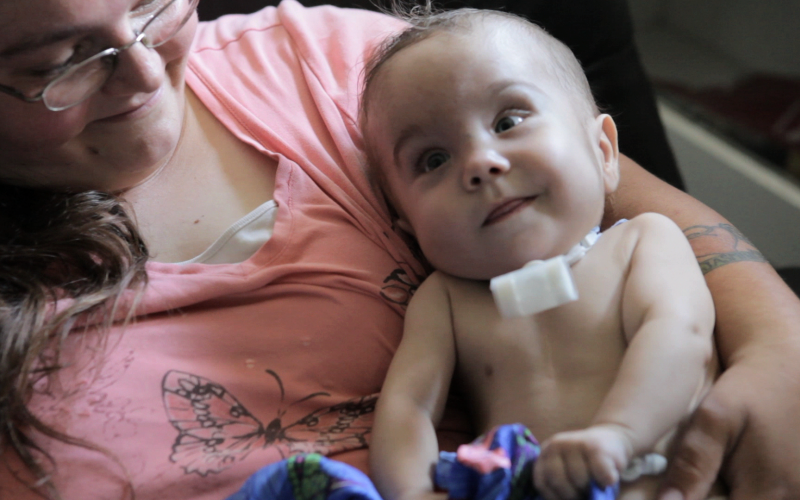3D Printed Tracheal Splint Saves Baby’s Life

Kaiba with his custom-tracheal splint, held in his relieved mother’s arms. Courtesy of UofM Health.
Latest News
May 23, 2013
Additive manufacturing (AM) is in the business of saving lives. The medical field has enthusiastically embraced the technology, using it to plan surgeries, manufacture vaccines, and are on the verge of leveraging AM to create synthetic human tissue. Now, doctors at the University of Michigan’s C.S. Mott Children’s Hospital have used 3D printing to save a child’s life.
Kaiba Gionfriddo was born with a rare medical condition named tracheobronchomalacia. From the time Kaiba was six weeks old, the bronchus responsible for moving air to his left lung would collapse, leaving him unable to breathe. Doctors weren’t optimistic about the baby’s chances.
“Quite a few doctors said he had a good chance of not leaving the hospital alive,” says April Gionfriddo, about her now 20-month-old son, Kaiba. “At that point, we were desperate. Anything that would work, we would take it and run with it.”
Fortunately for the Gionfriddo’s, help wasn’t far away. Dr. Glenn Green and his colleague, Scott Hollister, Ph.D, both at the University of Michigan, had been experimenting with a bioresorbable tracheal splint. Kaiba was transported to the C.S. Mott Children’s hospital where Green and Hollister received special permission from the FDA to create and implant a tracheal splint for Kaiba made from a biopolymer called polycaprolactone.
The custom medical device was designed using a CT scan of Kaiba’s trachea/bronchus. From there, the design was fabricated with a 3D printer before being sewn around Kaiba’s airway to expand the bronchus and give it a skeleton to aid proper growth. No additional surgery will be required to remove the splint after Kaiba’s bronchus grows and stabilizes on its own.
“The material we used is a nice choice for this. It takes about two to three years for the trachea to remodel and grow into a healthy state, and that’s about how long this material will take to dissolve into the body,” said Hollister.
Immediately following the surgery, Kaiba was able to breathe more freely and was permanently taken off ventilator support 21 days after the procedure. He has been able to breathe completely independently ever since.
“It was amazing. As soon as the splint was put in, the lungs started going up and down for the first time and we knew he was going to be OK,” said Green.
Below you’ll find a video about Kaiba and the life-saving surgery.
Source: UofM Health
Subscribe to our FREE magazine, FREE email newsletters or both!
Latest News
About the Author
John NewmanJohn Newman is a Digital Engineering contributor who focuses on 3D printing. Contact him via [email protected] and read his posts on Rapid Ready Technology.
Follow DE







